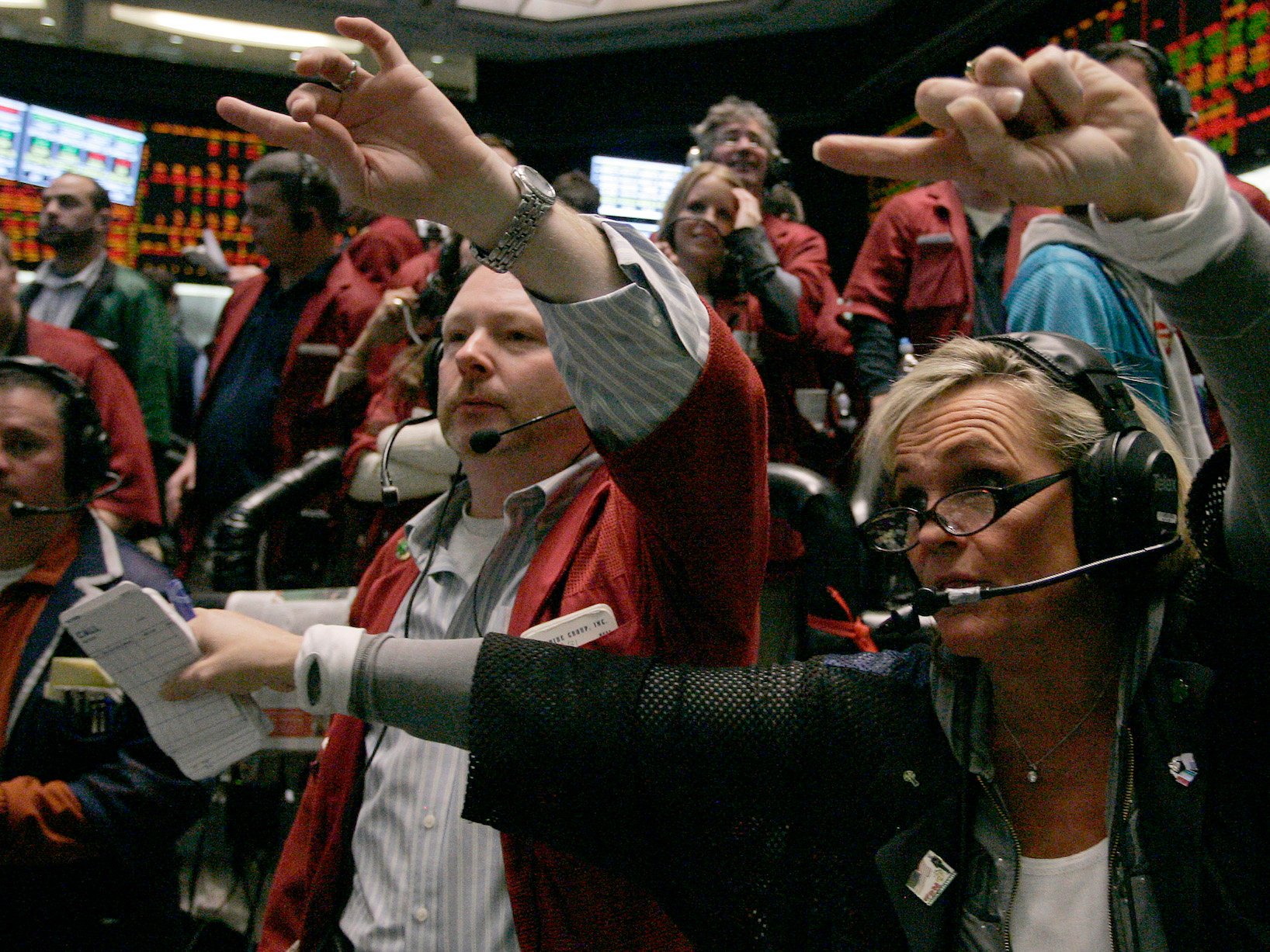 Frank Polich/Reuters
Frank Polich/Reuters
- Recent options-trading activity suggests “a more fundamental shift in outlook, rather than just bullish tactical positioning,” according to Credit Suisse.
- The past two weeks have seen a drop in the S&P 500’s six-month skew, which measures option prices betting on a decline relative to those betting on a rise.
- That’s a noteworthy difference from the drop in short-dated skew, which was already happening, Credit Suisse says.
The stock market’s unrelenting march higher has changed how investors see this bull market, according to Credit Suisse.
As the S&P 500 rose, investors positioned themselves to profit from new highs by demanding more call options, which are instruments that give them right to buy stocks at an agreed price.
In a note on Monday, Mandy Xu, the chief equity derivatives strategist at Credit Suisse, spotlights the S&P 500’s skew, a measure that tracks option prices betting on a decline relative to those betting on a rise.
Short-term skew fell in the final months of 2017, implying traders were demanding a higher volume of options that would benefit from higher stock prices. This wasn’t unexpected, since the market was rising in just the right mix of conditions: Volatility as measured by the Cboe’s index was at historic lows, the GOP was set to pass the most comprehensive corporate-tax reform in decades, and economies around the world were in growth mode.
“However, longer-dated skew had stayed fairly elevated – until now,” Xu said.
“Over the past two weeks, SPX 6M skew has fallen from the 82nd percentile high to now the 55th percentile. The decline in longer-dated skew suggests a more fundamental shift in outlook, rather than just bullish tactical positioning.”
That is, traders appear to be betting that stocks could keep going up well into 2018.
 Credit Suisse
Credit Suisse
Morgan Stanley’s equity analysts recently declared we’re in the full-blown “euphoria” stage of this bull market. And it’s not hard to find proof of this claim.
The S&P 500 is the most ‘overbought‘ in at least 22 years, according to its relative-strength index, which measures the size and speed of its price movements.
Across sectors, analysts are betting that the market’s biggest driver — earnings growth — will be the most impressive in several years. The analysts who forecast company earnings have made the smallest cuts to their fourth-quarter estimates since 2010, according to FactSet.
The American Association of Individual Investors found last week that only 15.6% of those it polled were bearish, a three-year low, and down from 34% a month ago.
The list goes on. And so, it’s no surprise, as Credit Suisse suggests, that it’s getting lonelier to be a bear in this market.













